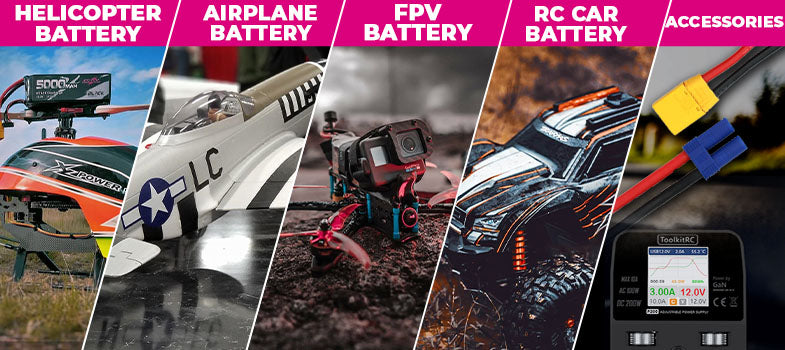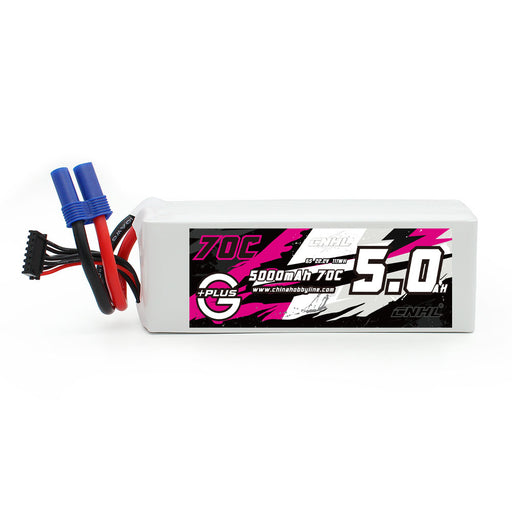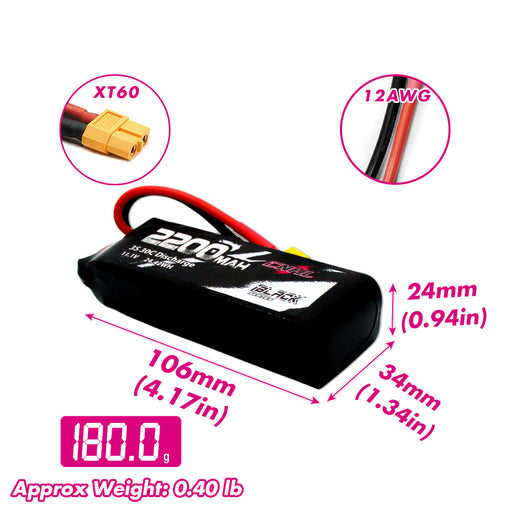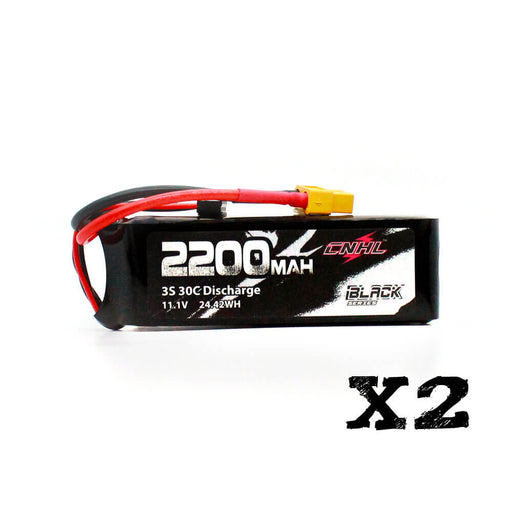
LiPo 배터리 비행 시간 계산 방법
RC 취미에서 가장 흔한 질문 중 하나는 "얼마나 오래 비행할 수 있나요?"입니다. 비행 시간을 아는 것은 단순한 호기심이 아니라 안전과 계획에 매우 중요합니다. 정확히 추정하면 전원이 꺼지기 전에 드론이나 비행기를 안전하게 귀환시킬 수 있고, 완벽한 영상 촬영을 계획하며 배터리를 과도하게 방전시켜 영구적인 손상을 방지할 수 있습니다. 이 가이드는 간단한 수학과 방법을 설명해 드립니다.
계산의 핵심 구성 요소는 무엇인가요?
공식에 들어가는 세 가지 주요 숫자를 이해해야 합니다. 대부분은 배터리에 인쇄되어 있습니다.
용량은 연료 탱크 크기라고 생각하세요. 밀리암페어시(mAh) 또는 암페어시(Ah)로 측정됩니다. 숫자가 클수록 탱크가 크고 보통 비행 시간이 길어집니다. 공식은 암페어 단위를 사용하므로 mAh를 Ah로 변환하려면 1000으로 나누면 됩니다. 예를 들어 5000mAh 배터리는 5Ah와 같습니다.
LiPo 배터리의 전압은 내부 셀 수에 의해 결정됩니다. 보통 숫자 뒤에 "S"가 붙어 표시됩니다(예: 3S, 4S, 6S). 각 셀은 약 3.7V의 "명목" 또는 저장 전압을 가지며 완전 충전 시 4.2V입니다. 따라서 4S 배터리는 대략 14.8V(4 x 3.7V)입니다. 전압은 항공기 전력 시스템에 중요하지만, 비행 시간 공식에는 용량이 필요합니다.
이것은 가장 중요하면서도 가장 까다로운 숫자입니다. 모터가 평균적으로 얼마나 많은 "연료"를 사용하는지를 측정하는 값입니다. 자동차의 MPG가 가속할 때와 순항할 때 달라지듯, 항공기의 전류 소비량도 계속 변합니다. 공격적인 비행은 부드러운 호버링보다 훨씬 더 많은 암페어를 소모합니다. 그래서 일반적인 비행의 평균 전류 소비량을 찾아야 합니다.
모든 LiPo 배터리에 대한 중요한 규칙이 있습니다: 절대 0%까지 완전히 방전하지 마세요. 그렇게 하면 배터리 화학에 돌이킬 수 없는 손상이 발생합니다. 안전하고 널리 인정된 방법은 "80% 규칙"으로, 배터리 총 용량의 80%만 사용해야 한다는 뜻입니다. 이는 배터리의 건강과 수명을 보호하기 위해 20%의 여유를 남겨둡니다.

핵심 비행 시간 계산 공식
이제 모든 것을 합쳐 봅시다. 수학은 놀라울 정도로 간단합니다.
기본적으로 계산은 연료 탱크 크기를 연료 사용 속도로 나누는 것과 같습니다.
비행 시간(분) = (배터리 용량 (Ah) / 평균 전류 소비량 (A)) * 60
80% 규칙을 따르려면 먼저 사용 가능 용량을 계산해야 합니다.
사용 가능 용량 (Ah) = 배터리 용량 (Ah) * 0.8
안전 마진을 주 공식에 넣으면 현실적이고 안전한 비행 시간 추정을 위해 실제로 사용해야 할 공식을 얻을 수 있습니다.
비행 시간(분) = (사용 가능한 용량(Ah) / 평균 전류 소모(A)) * 60
5000mAh(5Ah) LiPo 배터리가 있고, 드론이 정상 비행 중 평균 20암페어를 소모한다고 가정해 봅시다.
1. 사용 가능한 용량 찾기: 5 Ah * 0.8 = 4 Ah
2. 비행 시간 계산(시간 단위): 4 Ah / 20 A = 0.2시간
3. 분으로 변환: 0.2시간 * 60 = 12분
따라서 약 12분의 안전한 비행 시간을 기대할 수 있습니다.
평균 전류 소모량을 결정하는 방법
가장 어려운 부분이지만, 몇 가지 좋은 방법이 있습니다.
방법 1: 와트미터/전력 분석기 사용
가장 정확한 방법입니다. 이 장치를 배터리와 항공기 사이에 연결하고 벤치 테스트(안전을 위해 프로펠러 없이)를 실행해 전류 소모를 확인할 수 있습니다. 더 나아가, 일부 고급 비행 컨트롤러는 실제 비행 중 전류 소모를 기록해 가장 정밀한 데이터를 제공합니다.
방법 2: 호버 테스트 기반 추정
초보자를 위한 간단하고 "충분한" 방법입니다. 배터리를 완전히 충전하고, 드론을 일정 시간(예: 3-5분) 호버링한 후 착륙시키고, LiPo 충전기를 사용해 배터리에 다시 넣은 mAh를 확인하세요. 이 데이터를 사용해 호버링 중 평균 전류 소모를 계산할 수 있습니다.
방법 3: 온라인 계산기 사용
eCalc 같은 웹사이트는 모든 부품 세부사항(모터, 프로펠러, 무게 등)을 입력하면 비행 시간을 추정할 수 있습니다. 좋은 출발점이지만, 데이터가 완벽하지 않으면 부정확할 수 있다는 점을 기억하세요.
방법 4: 비행 로그 분석
고급 조종사라면 Betaflight, Ardupilot, iNav 같은 비행 컨트롤러가 순간순간의 정확한 전류 소모를 포함한 상세 비행 로그를 기록할 수 있습니다. 이 데이터를 분석하면 특정 비행 스타일에 가장 정확한 평균값을 얻을 수 있습니다.
실제 비행 시간에 영향을 미치는 요인
계산된 비행 시간은 기준선입니다. 실제 환경에서는 다음 요인들이 이를 변경합니다:
- 항공기 무게 (AUW): 항공기가 무거울수록(예: GoPro를 장착한 경우) 모터가 더 열심히 작동해야 하며, 비행 시간이 짧아집니다.
- 프로펠러 크기와 피치: 더 크거나 공격적인 프로펠러는 더 많은 전류를 소모합니다.
- 비행 스타일: 공격적이고 곡예 비행은 부드럽고 영화 같은 비행보다 LiPo 배터리를 훨씬 빨리 소모합니다.
- 환경 조건: 강한 바람을 맞으며 비행하는 것은 오르막길을 걷는 것과 같아 더 많은 에너지가 필요합니다. 추운 날씨도 배터리 성능과 비행 시간을 줄입니다.
- 배터리 건강과 수명: 오래되고 많이 사용된 배터리는 새 배터리만큼 충전을 유지하지 못해 비행 시간이 자연스럽게 짧아집니다.
LiPo 비행 시간을 극대화하는 팁
조금 더 오래 비행하고 싶나요? 다음 팁을 시도해 보세요:
- 가능한 한 무게를 줄이세요.
- 프로펠러와 모터 조합이 효율적인지 확인하세요.
- 부드럽게 비행하고 급격하고 공격적인 스로틀 변화를 피하세요.
- 적절한 충전 및 보관 방법을 따라 LiPo 배터리를 잘 관리하세요.
- 용량이 더 큰 배터리를 선택하세요, 하지만 더 큰 배터리는 무게도 더 늘어난다는 점을 유념하세요.

결론
비행 시간을 계산하는 것은 단일 완벽한 숫자를 찾는 것이 아니라 배터리 용량, 기체 전력 소비, 비행 스타일 간의 관계를 이해하는 것입니다. 이 가이드의 공식과 방법을 사용하면 추측에서 벗어나 합리적인 추정을 할 수 있습니다. 이는 더 안전한 비행, 더 나은 비행 계획, 그리고 LiPo 배터리를 오랫동안 건강하게 유지하는 데 도움이 됩니다.
자주 묻는 질문 (FAQ)
mAh와 전압만으로 비행 시간을 계산할 수 있나요?
아니요. 특정 기체의 평균 전류 소모를 모르면 가장 중요한 정보를 놓치게 됩니다.
LiPo 배터리의 80% 규칙이란 무엇인가요?
이것은 LiPo 배터리를 영구 손상 없이 오래 사용하기 위해 전체 용량의 20% 이하로 방전하지 말라는 안전 지침입니다.
온라인 비행 시간 계산기는 얼마나 정확한가요?
이들은 새로운 조립 계획을 위한 좋은 출발점이 될 수 있지만, 단지 추정치일 뿐입니다. 실제 환경 조건과 부품 차이로 인해 실제 비행 시간은 다를 수 있습니다.
온도가 비행 시간에 영향을 미치나요?
절대적으로 그렇습니다. 낮은 온도는 LiPo 배터리의 화학 효율을 떨어뜨려 사용 가능한 전력이 줄고 비행 시간이 눈에 띄게 짧아집니다. 추운 날씨에 비행하기 전에는 항상 배터리를 따뜻하게 유지하세요.

베스트 셀러즈
-
원래 가격 $65.99원래 가격 $65.99 - 원래 가격 $65.99원래 가격 $65.99$54.99 USD - $65.99 USD$54.99 - $65.99현재 가격 $54.99 USD
CNHL G+Plus 5000mAh 22.2V 6S 리포 배터리 70C EC5 플러그 포함
재고 10+개 이상 있습니다사양: 재고 번호: 500706EC5 용량: 5000mAh 전압: 22.2V / 6-셀 / 6S1P 방전율: 70C 연속 / 140C 순간 충전율: 최대 5C 크기(1-5mm 차이): 49X51X149mm(높이*너비*길이) 대략 무게(±5g) : 714g 출...
전체 세부 정보 보기원래 가격 $65.99원래 가격 $65.99 - 원래 가격 $65.99원래 가격 $65.99$54.99 USD - $65.99 USD$54.99 - $65.99현재 가격 $54.99 USD최대 17% 절약하세요 -
원래 가격 $38.99원래 가격 $38.99 - 원래 가격 $38.99원래 가격 $38.99$34.99 USD - $38.99 USD$34.99 - $38.99현재 가격 $34.99 USD
CNHL 스피디 피자 시리즈 프로 1350mAh 22.2V 6S 150C 리포 배터리 XT60 플러그 포함
재고 10+개 이상 있습니다사양: 재고 번호: 1351506PZ 용량: 1350mAh 전압: 22.2V / 6셀 / 6S1P 방전 속도: 연속 150C / 순간 300C 충전 속도: 최대 5C 크기(1-5mm 차이): 38X38X78mm 대략 무게(±5g) : 215g 출력 커넥터: X...
전체 세부 정보 보기원래 가격 $38.99원래 가격 $38.99 - 원래 가격 $38.99원래 가격 $38.99$34.99 USD - $38.99 USD$34.99 - $38.99현재 가격 $34.99 USD최대 10% 절약하세요 -
원래 가격 $51.98원래 가격 $51.98 - 원래 가격 $51.98원래 가격 $51.98$45.98 USD - $51.98 USD$45.98 - $51.98현재 가격 $45.98 USD
2팩 CNHL 블랙 시리즈 V2.0 1300mAh 22.2V 6S 130C 리포 배터리 XT60 플러그 포함
재고 10+개 이상 있습니다사양 재고 번호: 1301306BK 용량: 1300mAh 전압: 22.2V / 6-셀 / 6S1P 방전율: 130C 연속 / 260C 순간 충전율: 최대 5C 크기(1-5mm 차이): 48X33X77mm 대략 무게(±5g) : 210g 출력 커넥터: XT60 밸...
전체 세부 정보 보기원래 가격 $51.98원래 가격 $51.98 - 원래 가격 $51.98원래 가격 $51.98$45.98 USD - $51.98 USD$45.98 - $51.98현재 가격 $45.98 USD최대 12% 절약하세요 -
원래 가격 $43.98 - 원래 가격 $43.98원래 가격 $43.98$43.98 USD$43.98 - $43.98현재 가격 $43.98 USD
[Combo] 2팩 CNHL MiniStar 1500mAh 14.8V 4S Lipo 배터리 120C XT60 플러그 포함
재고 10+개 이상 있습니다사양: 재고 번호: 1501204 용량: 1500mAh 전압: 14.8V / 4셀 / 4S1P 방전 속도: 연속 120C / 순간 240C 충전 속도: 최대 5C 크기(1-5mm 차이): 37X33X76mm 대략 무게(±5g) : 169g 출력 커넥터: XT60...
전체 세부 정보 보기원래 가격 $43.98 - 원래 가격 $43.98원래 가격 $43.98$43.98 USD$43.98 - $43.98현재 가격 $43.98 USD -
원래 가격 $23.98 - 원래 가격 $37.98원래 가격 $23.98 - 원래 가격 $37.98원래 가격 $23.98$19.98 USD - $37.98 USD$19.98 - $37.98현재 가격 $19.98 USD
2팩 CNHL 블랙 시리즈 2200mAh 3S 11.1V 30C 리포 배터리 XT60 플러그 포함
재고 10+개 이상 있습니다사양: 재고 번호: 220303BK 용량: 2200mAh 전압: 11.1V / 3셀 / 3S1P 방전율: 30C 연속 / 60C 버스트 충전 속도: 최대 5C 크기(1-5mm 차이): 24X34X106mm 대략 무게(±5g) : 180g 출력 커넥터: XT60 ...
전체 세부 정보 보기원래 가격 $23.98 - 원래 가격 $37.98원래 가격 $23.98 - 원래 가격 $37.98원래 가격 $23.98$19.98 USD - $37.98 USD$19.98 - $37.98현재 가격 $19.98 USD최대 17% 절약하세요
새 항목
-
원래 가격 $122.99 - 원래 가격 $122.99원래 가격 $122.99$122.99 USD$122.99 - $122.99현재 가격 $122.99 USD
VOLANTEX BF109 RC 비행기 4채널 RTF – 자이로 및 XPilot 탑재 제2차 세계대전 전투기
단 9 개만 남았습니다VOLANTEX BF109 4채널 RC 비행기 RTF는 가장 상징적인 제2차 세계대전 전투기 중 하나를 컴팩트하고 초보자 친화적인 패키지로 선보입니다. 400mm 날개폭, 가벼운 EPP 폼 기체, 그리고 XPilot 자이로 시스템을 갖춘 이 전투기는 새로운 ...
전체 세부 정보 보기원래 가격 $122.99 - 원래 가격 $122.99원래 가격 $122.99$122.99 USD$122.99 - $122.99현재 가격 $122.99 USD -
원래 가격 $117.99 - 원래 가격 $117.99원래 가격 $117.99$117.99 USD$117.99 - $117.99현재 가격 $117.99 USD
Volantex RC 비행기 P51D V2 400mm RTF – 초보자를 위한 XPilot 안정장치가 탑재된 4채널 워버드
단 9 개만 남았습니다Volantex RC 비행기 P51D V2 RTF는 학습을 최대한 편안하게 할 수 있도록 설계된 컴팩트한 WWII 스타일 전투기입니다. 400mm 날개 길이, EPP 폼 구조, XPilot 6축 안정화 장치를 갖춘 이 Volantex RC 비행기는 초보자에게 ...
전체 세부 정보 보기원래 가격 $117.99 - 원래 가격 $117.99원래 가격 $117.99$117.99 USD$117.99 - $117.99현재 가격 $117.99 USD -
원래 가격 $148.87 - 원래 가격 $148.87원래 가격 $148.87$148.87 USD$148.87 - $148.87현재 가격 $148.87 USD
MF-A84 690mm P-47 스타일 브러시리스 RC 비행기 (RTF, 카메라 없음)
단 9 개만 남았습니다MF-A84 690mm 브러시리스 RC 비행기는 P-47 썬더볼트와 Ki-84 같은 클래식 전투기에서 영감을 받은 전투기 스타일 모델입니다. 강력한 브러시리스 모터, 3단계 자이로 시스템, EPP 내구성, 최대 25분 비행 시간으로 초보자와 숙련된 조종사 모...
전체 세부 정보 보기원래 가격 $148.87 - 원래 가격 $148.87원래 가격 $148.87$148.87 USD$148.87 - $148.87현재 가격 $148.87 USD -
원래 가격 $95.99 - 원래 가격 $95.99원래 가격 $95.99$95.99 USD$95.99 - $95.99현재 가격 $95.99 USD
CNHL G+Plus 6000mAh 22.2V 6S 100C 리포 배터리 EC5 플러그 포함
재고 10+개 이상 있습니다사양: 재고 번호: 6001006EC5 용량: 6000mAh 전압: 22.2V / 6-셀 / 6S1P 방전율: 100C 연속 / 200C 순간 충전율: 최대 5C 크기(1-5mm 차이): 40X66X170mm(높이*너비*길이) 대략 무게(±5g) : 975g...
전체 세부 정보 보기원래 가격 $95.99 - 원래 가격 $95.99원래 가격 $95.99$95.99 USD$95.99 - $95.99현재 가격 $95.99 USD -
원래 가격 $63.99 - 원래 가격 $63.99원래 가격 $63.99$63.99 USD$63.99 - $63.99현재 가격 $63.99 USD
CNHL G+Plus 6000mAh 14.8V 4S 100C 리포 배터리 XT90 플러그 포함
재고 10+개 이상 있습니다사양: 재고 번호: 6001004 용량: 6000mAh 전압: 14.8V / 4-Cell / 4S1P 방전 속도: 연속 100C / 순간 200C 충전 속도: 최대 5C 크기(1-5mm 차이): 27X66X170mm 대략 무게(±5g) : 669.5g 출력 ...
전체 세부 정보 보기원래 가격 $63.99 - 원래 가격 $63.99원래 가격 $63.99$63.99 USD$63.99 - $63.99현재 가격 $63.99 USD





















댓글 남기기